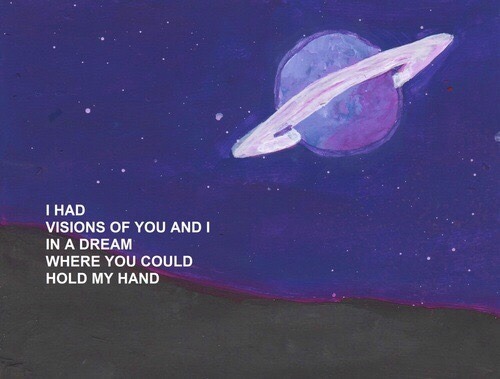"Kimse Anlamadı Duvarlarla Konuştuğumu, Kimse Anlamadı Sorunlarla Boğuştuğumu."
"Kimse anlamadı duvarlarla konuştuğumu, kimse anlamadı sorunlarla boğuştuğumu."
More Posts from Artemisz4 and Others
“Seni üzeni, şu an başka biri üzüyor. Bir yerlerde biri, bir diğerinin intikamını alıyor..”
Geçmişimin kanlı ellerinin boğazıma yapışmasına izin vermiş, kendi gerçekliğimi kaybetmiştim ama bunu ben doğurmamıştım. Geçmişimde olan hiçbir şeyi kendim istememiş, üzerine kan kokusu sinmiş katil ellerle kendi benliğimi öldürmek istememiştim. Bu geri dönüşü olmayan bir yol muydu bilmiyorum. Hala eski benliğimi getirmem için bir şansım var mı bilmiyorum.
Özel olduğumuzu söyleyerek kandırdılar hepimizi yalan mı lan?




insan tamamlanmamış bir cümledir.’
“Bütün hayatımızı yersiz çekingenliklerle mi geçireceğiz Olric? Cesareti yalnız kafamızda mı yaşayacağız?”
—
Tutunamayanlar, Oğuz Atay
(via gelecegebak)

Merhaba dünyalı, ben uzaylı. Ben uzaya sahip miyim? Neden uzaylı dediniz? Sen de dünyaya sahip olduğunu düşünüyorsun. Hah komik insancıklar...


Thnks
Interesting facts about stars
Stars are giant, luminous spheres of plasma. There are billions of them — including our own sun — in the Milky Way Galaxy. And there are billions of galaxies in the universe. So far, we have learned that hundreds also have planets orbiting them.
1. Stars are made of the same stuff

All stars begin from clouds of cold molecular hydrogen that gravitationally collapse. As they cloud collapses, it fragments into many pieces that will go on to form individual stars. The material collects into a ball that continues to collapse under its own gravity until it can ignite nuclear fusion at its core. This initial gas was formed during the Big Bang, and is always about 74% hydrogen and 25% helium. Over time, stars convert some of their hydrogen into helium. That’s why our Sun’s ratio is more like 70% hydrogen and 29% helium. But all stars start out with ¾ hydrogen and ¼ helium, with other trace elements.
2. Most stars are red dwarfs

If you could collect all the stars together and put them in piles, the biggest pile, by far, would be the red dwarfs. These are stars with less than 50% the mass of the Sun. Red dwarfs can even be as small as 7.5% the mass of the Sun. Below that point, the star doesn’t have the gravitational pressure to raise the temperature inside its core to begin nuclear fusion. Those are called brown dwarfs, or failed stars. Red dwarfs burn with less than 1/10,000th the energy of the Sun, and can sip away at their fuel for 10 trillion years before running out of hydrogen.
3. Mass = temperature = color

The color of stars can range from red to white to blue. Red is the coolest color; that’s a star with less than 3,500 Kelvin. Stars like our Sun are yellowish white and average around 6,000 Kelvin. The hottest stars are blue, which corresponds to surface temperatures above 12,000 Kelvin. So the temperature and color of a star are connected. Mass defines the temperature of a star. The more mass you have, the larger the star’s core is going to be, and the more nuclear fusion can be done at its core. This means that more energy reaches the surface of the star and increases its temperature. There’s a tricky exception to this: red giants. A typical red giant star can have the mass of our Sun, and would have been a white star all of its life. But as it nears the end of its life it increases in luminosity by a factor of 1000, and so it seems abnormally bright. But a blue giant star is just big, massive and hot.
4. Most stars come in multiples

It might look like all the stars are out there, all by themselves, but many come in pairs. These are binary stars, where two stars orbit a common center of gravity. And there are other systems out there with 3, 4 and even more stars. Just think of the beautiful sunrises you’d experience waking up on a world with 4 stars around it.
5. The biggest stars would engulf Saturn

Speaking of red giants, or in this case, red supergiants, there are some monster stars out there that really make our Sun look small. A familiar red supergiant is the star Betelgeuse in the constellation Orion. It has about 20 times the mass of the Sun, but it’s 1,000 times larger. But that’s nothing. The largest known star is the monster UY Scuti. It is a current and leading candidate for being the largest known star by radius and is also one of the most luminous of its kind. It has an estimated radius of 1,708 solar radii (1.188×109 kilometres; 7.94 astronomical units); thus a volume nearly 5 billion times that of the Sun.
6. There are many, many stars

Quick, how many stars are there in the Milky Way. You might be surprised to know that there are 200-400 billion stars in our galaxy. Each one is a separate island in space, perhaps with planets, and some may even have life.
7. The Sun is the closest star

Okay, this one you should know, but it’s pretty amazing to think that our own Sun, located a mere 150 million km away is average example of all the stars in the Universe. Our own Sun is classified as a G2 yellow dwarf star in the main sequence phase of its life. The Sun has been happily converting hydrogen into helium at its core for 4.5 billion years, and will likely continue doing so for another 7+ billion years. When the Sun runs out of fuel, it will become a red giant, bloating up many times its current size. As it expands, the Sun will consume Mercury, Venus and probably even Earth.
8. The biggest stars die early

Small stars like red dwarfs can live for trillions of years. But hypergiant stars, die early, because they burn their fuel quickly and become supernovae. On average, they live only a few tens of millions of years or less.
9. Failed stars

Brown dwarfs are substellar objects that occupy the mass range between the heaviest gas giant planets and the lightest stars, of approximately 13 to 75–80 Jupiter masses (MJ). Below this range are the sub-brown dwarfs, and above it are the lightest red dwarfs (M9 V). Unlike the stars in the main-sequence, brown dwarfs are not massive enough to sustain nuclear fusion of ordinary hydrogen (1H) to helium in their cores.
10. Sirius: The Brightest Star in the Night Sky

Sirius is a star system and the brightest star in the Earth’s night sky. With a visual apparent magnitude of −1.46, it is almost twice as bright as Canopus, the next brightest star. The system has the Bayer designation Alpha Canis Majoris (α CMa). What the naked eye perceives as a single star is a binary star system, consisting of a white main-sequence star of spectral type A0 or A1, termed Sirius A, and a faint white dwarf companion of spectral type DA2, called Sirius B.
To know more click the links: white dwarf, supernova, +stars, pulsars
sources: wikipedia and universetoday.com
image credits: NASA/JPL, Morgan Keenan, ESO, Philip Park / CC BY-SA 3.0

-
 usqueadmorte liked this · 2 months ago
usqueadmorte liked this · 2 months ago -
 orendast liked this · 2 months ago
orendast liked this · 2 months ago -
 narinruhlar liked this · 2 months ago
narinruhlar liked this · 2 months ago -
 merculusss liked this · 2 months ago
merculusss liked this · 2 months ago -
 theedictofthestar liked this · 2 months ago
theedictofthestar liked this · 2 months ago -
 25-to-life liked this · 2 months ago
25-to-life liked this · 2 months ago -
 panzehri reblogged this · 2 months ago
panzehri reblogged this · 2 months ago -
 hevesler liked this · 2 months ago
hevesler liked this · 2 months ago -
 birsezen liked this · 2 months ago
birsezen liked this · 2 months ago -
 152326rs liked this · 2 months ago
152326rs liked this · 2 months ago -
 kayanyildizmisali liked this · 2 months ago
kayanyildizmisali liked this · 2 months ago -
 zeval-s liked this · 2 months ago
zeval-s liked this · 2 months ago -
 uz-let reblogged this · 2 months ago
uz-let reblogged this · 2 months ago -
 uz-let liked this · 2 months ago
uz-let liked this · 2 months ago -
 efillavin liked this · 3 months ago
efillavin liked this · 3 months ago -
 serrraalarla liked this · 3 months ago
serrraalarla liked this · 3 months ago -
 iamokayvallabakx liked this · 3 months ago
iamokayvallabakx liked this · 3 months ago -
 sikerlerr liked this · 8 months ago
sikerlerr liked this · 8 months ago -
 husranxx liked this · 9 months ago
husranxx liked this · 9 months ago -
 inflames97 liked this · 11 months ago
inflames97 liked this · 11 months ago -
 thetiiis liked this · 1 year ago
thetiiis liked this · 1 year ago -
 catennifarmza liked this · 1 year ago
catennifarmza liked this · 1 year ago -
 maviuzayboslugu reblogged this · 1 year ago
maviuzayboslugu reblogged this · 1 year ago -
 yeryuzundeki-kara-delik reblogged this · 1 year ago
yeryuzundeki-kara-delik reblogged this · 1 year ago -
 hdumann liked this · 1 year ago
hdumann liked this · 1 year ago -
 unuturlarbeni reblogged this · 1 year ago
unuturlarbeni reblogged this · 1 year ago -
 cutegirl02 liked this · 2 years ago
cutegirl02 liked this · 2 years ago -
 sma-xo liked this · 2 years ago
sma-xo liked this · 2 years ago -
 mystuffsince22 reblogged this · 2 years ago
mystuffsince22 reblogged this · 2 years ago
